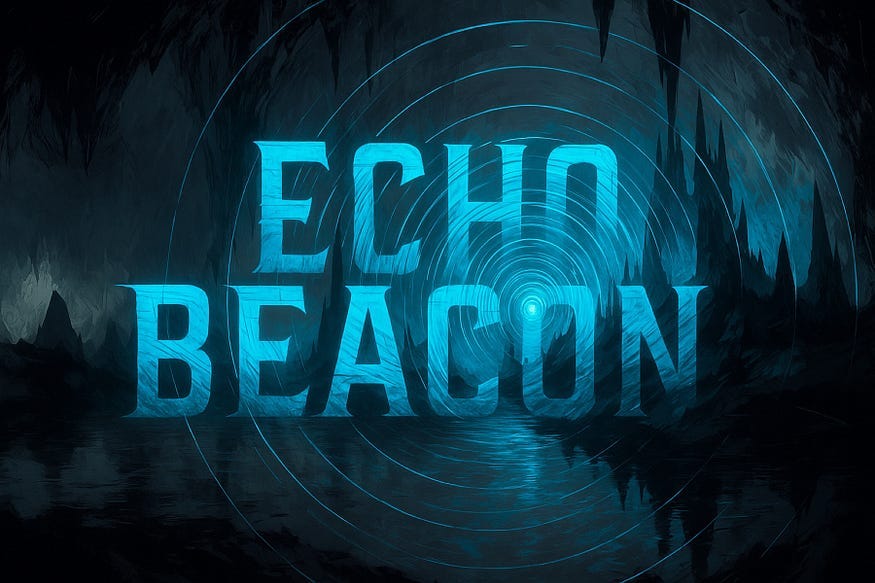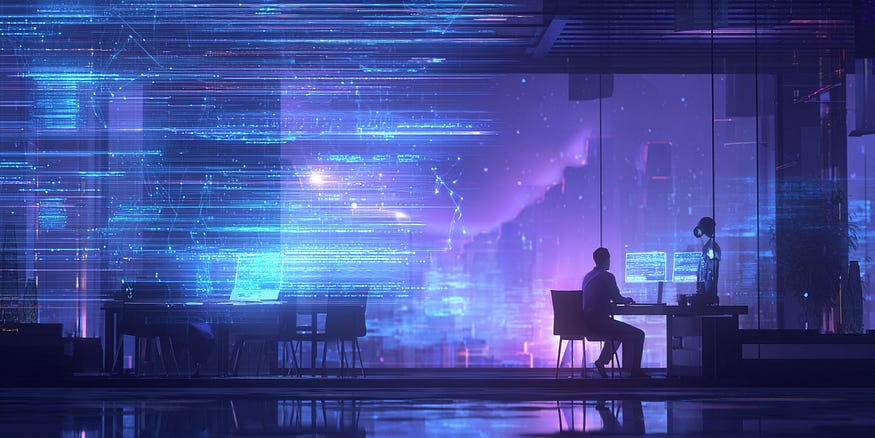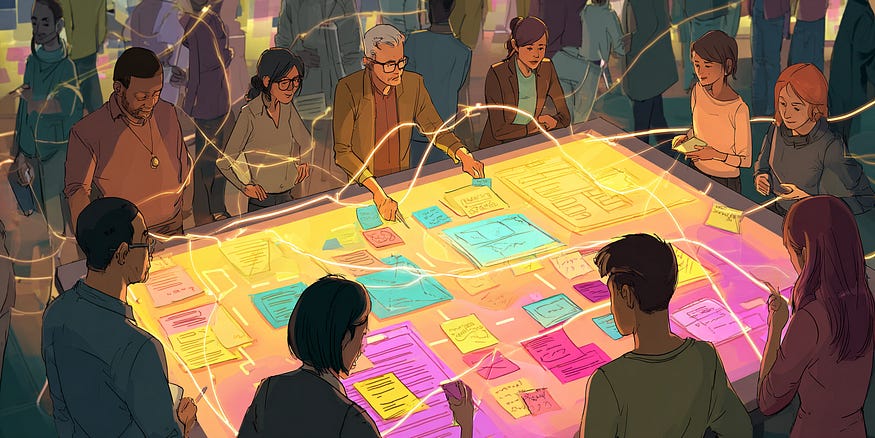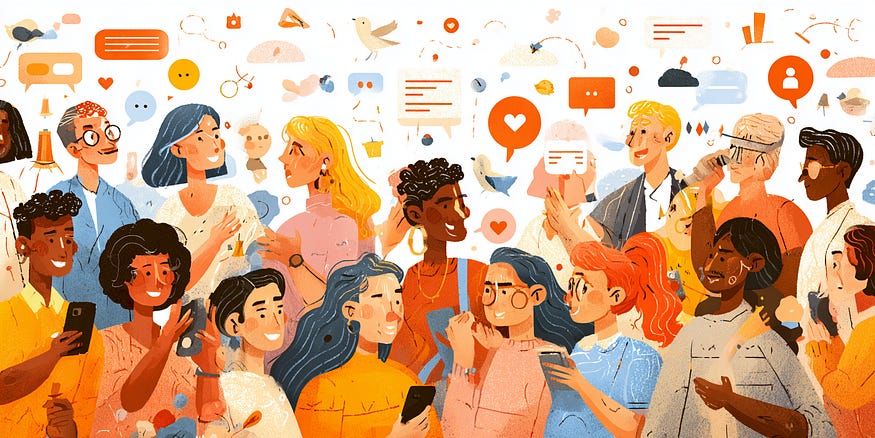Building Echo Beacon’s Homepage: How AI and Community Created Our Game’s Digital Home
From zero to live website in one stream — the power of AI-assisted development and community collaboration
The Beginning of Something Special
Three hours ago, we had nothing but an idea. Now, we have a professional homepage that captures the essence of our upcoming echolocation adventure game, Echo Beacon: The Cartographer’s Journey. But this wasn’t just another web development session — this was a masterclass in AI-human collaboration, streamed live with a community that helped shape every decision.
If you missed the stream or want to see what we built together, check out our live website: https://ryan-craven-qa.github.io/echobeaconwebsite/
Why Start with a Homepage?
Before diving into Unity and building the actual game, we needed to answer a fundamental question: How do you explain a game based on echolocation to people who’ve never experienced it?
Echo Beacon isn’t just another indie game. It’s an adventure where players navigate pitch-black caves using sound waves, where every surface tells a story through unique audio signatures, and where accessibility isn’t an afterthought — it’s the foundation. These concepts needed a visual home before we could build the interactive experience.
The AI Development Revolution
Cursor AI: Our Coding Partner
For this project, we’re using Cursor AI as our primary development assistant. Think of it as having a senior developer sitting next to you, ready to write code based on your descriptions. But unlike a human pair programmer, Cursor never gets tired, never judges your questions, and always explains what it’s doing.
Our first prompt was ambitious:
Create a complete homepage for a video game called "Echo Beacon: The Cartographer's Journey".
Game concept: Players navigate pitch-black caves using echolocation - sending out sound pulses that briefly reveal the environment. Different materials (stone, water, metal, crystal) create unique visual and audio signatures.
Create a dark, mysterious website with modern HTML5 structure, professional CSS with cave/echolocation theme, interactive elements, mobile responsive design, and compelling copy that explains the game concept.In minutes, Cursor generated a complete website with HTML structure, atmospheric CSS styling, and even compelling copy that captured our vision better than we could have written ourselves.
Community-Driven Design
Democracy in Real-Time
What made this session special wasn’t just the AI assistance — it was how our community shaped every major decision. Live streaming development means every choice becomes a collaborative moment.
Color Scheme Vote: The chat debated between deep blues with cyan accents versus dark purples with gold highlights. The electric blue theme won, perfectly matching the echolocation concept.
Typography Decision: Community members suggested everything from futuristic fonts to handwritten styles. We settled on clean, readable typography that suggests high-tech exploration without sacrificing accessibility.
Interactive Features: Viewers suggested adding a “Try Echo Pulse” button, hover effects that simulate echolocation detection, and visual demonstrations of how different materials respond to sound waves.
Every suggestion was considered, many were implemented in real-time, and the final result reflects the collective creativity of our community.
The Technical Magic
From Prompt to Professional Website
The development process showcased what’s possible when AI handles the heavy lifting while humans focus on creativity and decision-making:
Structure Generation: Cursor created semantic HTML5 with proper accessibility features
Atmospheric Design: CSS that captures the mystery of cave exploration with subtle animations
Interactive Demos: JavaScript features that let visitors experience echolocation concepts
Responsive Design: Mobile-friendly layout that works on any device
Performance Optimization: Fast-loading, accessible code that follows web standards
The Learning Loop
Each iteration taught us something new about both our game concept and AI-assisted development:
Prompt Engineering: How to describe visual concepts to AI for better results
Real-time Customization: Modifying code live based on community feedback
Accessibility First: Building inclusive experiences from the ground up
Visual Storytelling: Communicating complex game mechanics through web design
What We Built Together
The final website includes several innovative features:
Interactive Echolocation Demo
A mini-simulator where visitors can click to send “echo pulses” and see how different materials respond with unique visual patterns. It’s a simplified version of our core game mechanic that anyone can understand immediately.
Material Showcase
Visual representations of our five material types (Stone, Water, Metal, Crystal, Organic) with explanations of how each creates different audio and visual signatures in the game.
Development Journey Section
Transparency about our process — how we’re building the game live on stream with AI assistance and community input. This isn’t just marketing; it’s an invitation to participate in game development history.
The Educational Impact
Learning Web Development in Real-Time
One of the most rewarding aspects was watching viewers learn alongside us. Comments like “I never understood CSS before this” and “Now I want to try AI-assisted coding” showed that we weren’t just building a website — we were democratizing development education.
The session covered:
HTML fundamentals through practical application
CSS styling concepts with immediate visual feedback
JavaScript interactivity through game-relevant examples
AI prompt engineering for better development results
Breaking Down Barriers
Traditional game development education often requires expensive courses or years of study. By streaming our entire process and explaining every decision, we’re showing that modern tools make development more accessible than ever.
Community Feedback and Results
The response exceeded our expectations:
Immediate Impact
Active Chat Participation: Dozens of design suggestions and votes
Educational Value: Viewers learning web development concepts in real-time
Community Building: People excited to follow the entire development journey
Professional Results
Complete Website: Fully functional, mobile-responsive homepage
Interactive Features: Working demos that explain game concepts
Marketing Foundation: Professional presence for sharing and promotion
Development Documentation: Process recorded for future reference
What’s Next: From Web to Game
Session 1 established our digital presence and community. Session 2 begins the real adventure — building the actual game in Unity.
The Road Ahead
Unity Development: Creating our 3D cave environments
Echolocation Mechanics: Implementing the core sound-based navigation
AI-Assisted Game Development: Using Cursor for C# scripting and game logic
-Community Features: Integrating viewer suggestions into gameplay mechanics
Join the Journey
This is just the beginning of an ambitious experiment: building a complete game live on stream with AI assistance and community collaboration. Every session builds on the last, every decision involves our viewers, and every line of code is written transparently.
Whether you’re interested in game development, AI tools, accessibility design, or just enjoy watching creative projects come to life, there’s a place for you in our community.
Follow Along & Get Involved
🌐 Website & Development Hub
Main Website: https://ryan-craven-qa.github.io/echobeaconwebsite/
Updated after each session with new features and development progress
📺 Watch the Live Development
YouTube: [ https://www.youtube.com/@subvet-gaming ] — Full stream VODs and highlights
Twitter/X: [ https://x.com/SubVet_Gaming ] — Development updates, stream announcements, and tech insightst
Instagram: [ https://www.instagram.com/subvet_gaming/ ] — Visual development progress and behind-the-scenes content
The Bigger Picture
Redefining Game Development
Echo Beacon represents more than just an indie game — it’s a proof of concept for a new way of creating interactive entertainment:
AI as Creative Partner: Not replacing human creativity but amplifying it
Community as Co-Creator: Players involved from concept to completion
Accessibility as Foundation: Inclusive design from day one, not as an afterthought
Transparent Development: Open process that educates and inspires
The Future of Inclusive Gaming
By building Echo Beacon with accessibility as our core principle, we’re demonstrating that inclusive design doesn’t limit creativity — it expands it. When you design for echolocation navigation, you create something that works for everyone while offering a completely unique experience.
Conclusion: More Than a Website
Session 1 proved that the future of development is collaborative, AI-assisted, and community-driven. In three hours, we created not just a website but a foundation for something revolutionary.
Our homepage isn’t just marketing material — it’s a manifesto. It says that games can be accessible without sacrificing innovation, that development can be transparent without losing magic, and that AI can amplify human creativity without replacing it.
The best part? This is just day one.
Ready to navigate by sound? The adventure is just beginning.









